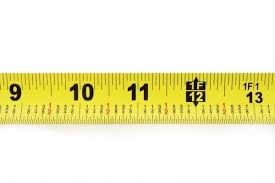In the plethora of leagues available to play in Fantasy Baseball, my favorite is the keeper league. There are probably a million definitions for a keeper league and the differences between keeper and dynasty vary from similar to really different. In a keeper league, you and your fellow owners will be retaining players on a year to year basis but with enough turnover after the freeze lists that there will be accessibility to some top end talent. In dynasty leagues, most-if not all of the top talent in the league is retained from year to year and what you will be doing is back-filling your roster with prospects, recent MLB draft picks, J2/international signings and backups. In some keeper leagues you will notice have more of the top talent available on a year to year basis while some play more like a dynasty league where there is less top-level talent available at draft time. If your league has been playing for more than 5 years you may have been able to identify a pattern.
There are many different ebbs and flows to a keeper league. To try and establish a predictive model for it would be near impossible. The keeper league usually has a feel of a consistent cycle of trying to compete one year and maybe rebuilding the next. Although Flags do Fly Forever and the goal, for me at least is to try and win every year, it is not easily done in a well cycled keeper league. For teams that win in one year the cost of winning might have come in the form of trading cheap assets to acquire a stud to help win the league (unless you completely crushed the draft OR when you acquired said stud, the other owner didn’t squeeze enough of your assets away from you). This is where the keeper league shines. The constant tossing and turning of whether to trade cheap, high profit keepers for an expensive player that you will most likely not be freezing is the life of the league. That feeling of playing pretend MLB GM is what gives the keeper league such an edge in playing formats. Whether your keeper list is strong or weak, the great thing about a keeper league is that you can have several attack points to have a solid draft and remain competitive via trading and shrewd free agency moves. Your decision to go for it and win and forfeit some of the future is one that can lead to a championship or several years of future ruin. The key is finding that happy balance. You should be striving to win in any given season with an eye toward not weakening your club too much for the ensuing seasons. You want your team to remain a force every year so that it gives you the flexibility to go either direction in trade scenarios that lead to future team builds. Maybe you realize that even by trading a stud away for cheap, profitable keepers, that your team can still compete this year’s trophy top while setting yourself up for next year as well.
In keeper leagues there are big bag of tools that you can carry around to help be as successful as you need to be. Just as a carpenter or a plumber carries their essential tools to the job, they must be able to use them and know how to use them to be effective and efficient at their craft. There are a ton of keeper leagues out there all with different league settings and keeper rules, so following a specific technique or approach to winning all comes with the caveat of knowing the rules and dynamics of you league. It is why there aren’t a specific set of rules that encompasses all keeper leagues. With that being said we can use these specific tactics to gain an edge on your league mates. In this article we will go over some simple things to know about keeper leagues, then go forward with some strategies and approach in future articles in the Auction Keeper League series.

- SIZE MATTERS – it really does. How many owners/teams are in your league? For Keeper leagues it is critical to understand your league roster size. The basics are of course how many players will be in the active starting lineup and how many can you have in your reserves. Is there a maximum on any position that you can carry on your roster at once? Is there a separate roster for minors? Understand how many IR spots will be available (and more important, who is eligible for these spots). Finally, the most critical size is how many players you are allowed to holdover from one year to the next. Most often this is where leagues tend to vary the most, so it is important you know this simple rule.
- Understand all the league settings and rules. Know the format of your league. Is it points based, roto or head to head categories? Understand how these variations influence player values.
- Understand the keeper rules of your league. Every player who is held over has a contemplation of cost built into their value. You will need to know what the cost will be to keep these players for the next year or multiple years to come and compare it to the other teams in your league. For standard snake drafts there can be a league that plays with no keeper penalty. For example, if there are 5 keepers per team, it basically represents the first 5 rounds of the draft. This is the league where you will need the least amount of prep for keeper wise. Some leagues require that you lose the round that you picked that player. So, if you took Yoan Moncada last year in round 10, you will lose the 10th round pick in the draft. For the focus of this article we will be talking about Auction keeper leagues. There are tons of different auction keeper league settings out there with the keeper focus varying from contract length to the monetary value of salary increases. Some leagues might lean on a year to year hold over basis for players where its +$5 from the previous year’s cost to keep the player. Some leagues will add in amount of years you can keep a player before he is mandated to go back into the pool. There are leagues with contracts that include both price increases and length of service time. I am the commissioner of a league that was started in 2007. It is a head to head category league (there will be a future article in this series of Auction Keeper league focus that will dive more into the strategies of roto/h2h leagues). We have 10 keepers max per team, where you can keep as much as 10 or as little as you want (its rare owners cut themselves short on a keeping only 7 or 8 players- in instances where guys had shit teams is where its happened, you aren’t going to keep Ronald Guzman for $10 just because you have room). We also have a pretty extensive contract/salary system for holding players over for the years to come. If you want to keep a player for the following year its + $5 of the players salary that year. If he’s a dollar, he becomes $6. You can sign a player to a 2- or 3-year deal. The 2-year deal jumps the players salary to + $4 in the two years to follow. Again, we will use the example of a $1 player in 2019 who will be $5 for 2020 and $9 for 2021. For a 3 year deal the players salary goes up $3 in each successive year after. That $1 rookie stud out can be yours for the next 3 years at a cost of $4/$7/$10. In our league you can hand out a max of 2 contracts to any one player before he needs to be released back into the player pool. In theory you can have a player for 7 years if you draft him or add him via free agency, then sign him to two separate 3-year deals. In this league, as with some other keeper league formats, the chance to own a player for most/if not all of his most productive seasons is higher than in other leagues but you still get a healthy dose of player turnover in the draft because of players that were drafted or acquired through waivers at a cost that is too high for retaining. When you have to factor in these kinds of salaries or contract offerings it is imperative to know them inside and out and how it relates to the relative player values in your league.
The art of maximizing the most out of your keeper situations starts with knowing the rules. Then it branches out to how you want to build your team. Will you look to win now with some eye for the future? Will you look to build a team that you think will be a force in 3 years and then be dominant for the years following? Knowing the hold over tendencies of other owners and how they prefer to build their teams is very helpful. You need to be constantly aware of how they like to draft and who they like to draft. Keep records of every teams’ keepers and the ensuing draft results. Be mindful of their bidding patterns in drafts. Know how they pursue free agents and if they are willing trade partners. KNOW IT ALL! If your league does free agency through FAAB and the results of not only who won the bid but who lost the bid are shown, make a mental or handwritten note of who lost the bids. Knowing WHO other owner’s value is such valuable information to have and probably the gist of the keeper league. Knowing your league and owner tendencies is just as equal as to nailing your player evaluations. I hope you enjoyed the first article into the Auction Keeper League series. Next up is an article on inflation values.



